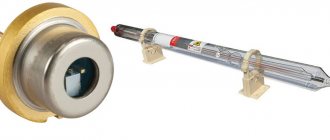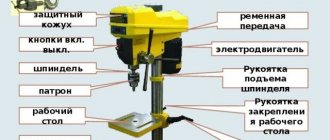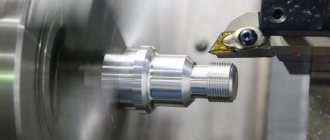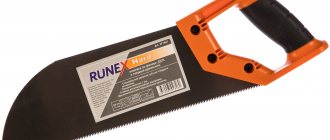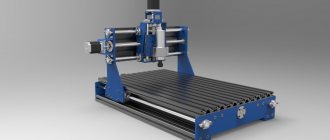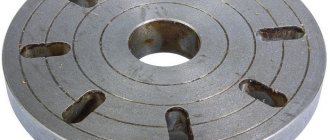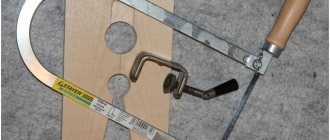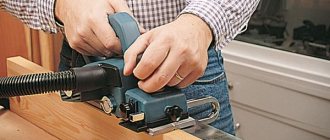The power of the laser module is a key parameter when choosing a machine for cutting plywood. But this is not the only factor that must be taken into account before purchasing a machine to solve specific problems.
Read our instructions for selecting CNC laser machines for cutting plywood.
What kind of laser is needed for cutting plywood?
The choice of a laser for cutting plywood directly depends on the tasks to be solved using the device.
To a first approximation, we can assume that the required power of the optical installation is directly dependent on the thickness of the plywood sheets being processed. In practice, there are other conditions that influence the selection of certain cutting machine parameters. For example, in a company that uses large circular saws to cut large sheets of plywood, a low-power laser machine may be the best option for cutting small sheets.
Laser machines for cutting plywood have a number of advantages that distinguish them from machines for mechanical processing:
- High cutting precision;
- Ability to create objects of complex shapes;
- Ease of use;
- No noise or sawdust in the process.
All of the above advantages are possible due to the fact that in laser machines the working “tool” is a thin beam of light with high power. The beam burns through the plywood board, leaving a thin and narrow cut, like a surgical scalpel. Thanks to numerical program control, the machine is able to draw an ornament of any complexity. Therefore, the most suitable tool for creating decorative plywood elements is a CNC laser machine.
The disadvantages include the cost of the laser machine. This drawback only applies to powerful devices with a large working surface. The price of basic models is comparable to milling machines of a similar area. If you have sufficient competence, you can assemble a laser machine of any power with your own hands. The work will take a lot of time, but the financial savings will be significant.
Depending on the power and functionality, machines are divided into types. Since nowadays even budget models are equipped with CNC, we will not consider manually controlled machines as an option.
Source: top3dshop.ru
By purpose:
- A cutting and engraving machine is a low-power device designed for engraving on plywood and cutting thin sheets;
- The industrial machine is a universal machine that is suitable for cutting plywood sheets of any thickness.
By laser head power:
- Up to 50 W - low-power devices;
- From 50 to 90 W - universal devices;
- From 100 W - industrial-grade devices.
There is a common relationship between the power of the laser machine and the size of the work area. Higher power means larger surface area to be processed. Exceptions happen very rarely.
In the far corners the machine cuts worse than near the mirror at the origin.
There are two reasons here:
- You need to adjust the mirrors because the laser beam is running out.
- Your exhaust hood is poor and the laser beam is extinguished due to the large amount of smoke.
- The machine is in good working order and adjusted. Cutting is performed at a speed at which the material just has time to cut through. The larger the field size of the machine, the greater the distance the laser beam needs to travel. This distance is greatest in the lower right (or lower left) corner. While the laser radiation reaches the head of the laser machine, it is scattered and refracted - this is an absolutely normal effect. To differentiate problem No. 3 from No. 2 and No. 1, numerical criteria should be introduced. In our company, the limit is considered to be a deviation in cutting speed of more than 10%. That is, if the laser machine in the upper left corner cuts through the material at a speed of 30 mm/s, then it must cut through the material in the right corner at a minimum speed of 27 mm/s. Accordingly, the cutting speed is set such that the laser machine can cut in all four corners. If the deviation is more than 10%, then we can definitely say that the alignment of the machine is incorrect or the working area is heavily smoky.
What is a laser head for cutting plywood
Source: all3dp.com
A laser head for cutting plywood is an optical element of the machine, consisting of a radiation source (laser) and a focusing lens that directs the beam onto the surface being processed.
There are mainly two types of lasers used in plywood cutting machines:
- CO2 (carbon dioxide) - the source of radiation is a tube filled with gas. Such installations can have great power, but they have relatively large dimensions.
- Diodes - with a semiconductor laser - usually (but not always) have lower power, but very compact dimensions. Due to their compactness and ease of use, they are often used on small machines.
We are planning to use the machine in an unheated room - what can we do?
Antifreeze can be used as a coolant. However, we recommend using the machine in normal conditions: 15 to 25 degrees. Low temperature negatively affects the optical resonator of the tube. Also, at low temperatures, condensation may form on the mirrors, causing the laser beam to fade and scatter on its way to the lens. More detailed information about how temperature changes harm laser equipment can be found in the article listed at the very beginning.
What is a laser module for cutting plywood
A laser module is a unit that consists of a laser head and other elements necessary for operation: an optical system, a power supply, a cooling system and control electronics. The implementation of a specific module circuit depends on the power and type of emitter, as well as on the purpose of the machine.
According to the purpose of the machine, laser modules are divided into:
- Collimated - to create a grating or circle with a laser beam;
- Focused - for consistent line formation.
Source: all3dp.com
In practice, as a rule, all laser modules for cutting plywood focus radiation at one point. Firstly, such a system is much cheaper and easier to maintain. Secondly, this way a CNC machine can form any lines. Therefore, focused modules allow you to cut out not only rectangles and circles, but also objects of arbitrary shape.
Laser modules are also divided into types, depending on the length of the light wave emitted by the emitter. In the case of plywood cutting machines, both diode and CO2 lasers belong to devices operating in the infrared range.
There is no beam, the laser beam does not appear, the machine does not shoot
The most common problem is the water flow sensor. Check to see if the Water protection (WP) LED on the ignition unit is lit? If it doesn’t light up, it means that your water supply tube is pinched or air has gotten into the sensor or it’s stuck. You need to re-bleed the system and check all the hoses. In case of emergency, you can close the contacts suitable for the water flow sensor. However, you need to take into account that in this case your machine operates without protection.
If the above recommendation does not help, then you need to check all connections. You can touch any elements inside the laser machine only 15 minutes after completely unplugging it from the outlet!
Description of laser for cutting plywood
Source: all3dp.com
The operating principle of a laser plywood cutting machine is easy to understand: a laser emitter creates a beam of light of a given wavelength, and the beam power is sufficient to burn through the fibers of a wood board. The higher the power, the deeper the beam penetrates into the plywood, and the thicker the sheet that can be cut in one pass. The power range varies, starting from several watts.
How to avoid carbon deposits
This problem most often appears when there are not enough machine resources. Or the settings are not selected correctly:
- head speed,
- beam power,
- beam focusing,
- air supply for blowing the lens.
Important! These parameters are interrelated. If you change at least one of them, you need to select the corresponding others.
Speed setting
This parameter is selected experimentally, taking into account:
- density and thickness of the workpiece,
- radiation power.
The thicker the sheet, the slower the process occurs. Water-resistant types of material also slow down processing. The higher the energy of the beam, the faster it cuts. This means that the speed must be chosen so that the beam has time to cut through, but does not char.
Beam power
It is selected so that the machine cuts, but does not burn. If the emitter allows, this parameter is selected for the maximum speed of head movement. Important! The strength of the light flux depends on the condition of the laser tube. It has a limited resource. Over time, it sits down and the radiation weakens.
Focusing
The radiation from the tube is redirected using a prism to a lens, which focuses it onto the working surface. For the process to proceed cleanly and quickly, the beam must be well focused on the surface of the workpiece and be as thin as possible. This is achieved by adjusting the focal length. Focusing also depends on the state of the focusing lens:
- temperature regime,
- cleanliness of the lens surface.
Blowing the lens
Cooling is carried out by air flow. If the airflow on the lens stops or becomes weaker, it will begin to heat up. The laser spot area becomes wider. Soot appears. For thick sheets, airflow of 1.5-2 atmospheres is used. This ensures a bright and clean cut surface.
What laser power is needed to cut plywood?
Source: all3dp.com
Typically, laser machines with the following emitter power are used for cutting plywood:
- Up to 50 W - for cutting sheets up to 6 mm thick;
- 60 - 80 W - for cutting sheets up to 8 mm thick;
- More than 80 W - for cutting sheets up to 10 mm thick.
The power of the emitter is always indicated in the device specifications, along with the power consumption of the device as a whole. For example, the LaserSolid 640 Lite laser power is 50 W, the device power is 450 W.
However, there are laser modules with much lower power. Let's consider the capabilities of such elements.
Laser 2.1 W
Source: beamqus.com
The purpose of the 2.1 W diode laser is to cut cardboard and plywood up to 1 mm thick. More often, modules of this power are installed in engravers.
3.5W cutting laser
The 3.5 W laser module for cutting plywood is also used primarily for engraving. As an exception, it can be used for cutting plywood. But to process a sheet even 3 mm thick it will take about 20 passes.
5.6 W short throw laser
Source: samoa.desertcart.com
There are few differences between this device and the one discussed above. For example, cutting 3 mm thick plywood will require 4 passes. It's faster, but still very slow.
Laser 8 W
The 8-watt laser module is more efficient at cutting plywood sheets. A device equipped with such an emitter can cut a sheet 2 mm thick in one pass.
10W cutting laser
Source: alexnld.com
Increased power to 10W provides the potential to cut 3mm thick plywood in one pass. However, such equipment is still found mainly in homemade cutting machines and laser engravers.
Laser 15 W
Fifteen-watt diode lasers can be used to cut plywood up to 10 mm thick, but this will require going over the same line several times. Such devices are suitable for amateur-level machines. Due to their low power, they have low heat generation and energy consumption. Accordingly, compact cooling systems will be required for trouble-free operation.
For professional cutting of plywood sheets, we recommend using machines equipped with laser modules with a power of 40 W or more.
Chapter 3. Installation
Workplace requirements.
Working conditions must meet the requirements listed below. Lack of suitable operating conditions may result in equipment malfunction or damage.
The indoor temperature should be between 15-35°C. When the ambient temperature is higher than the maximum intended, the equipment will overheat, causing damage. When the ambient temperature is below the minimum specified, rapid wear of the guides and jamming of the mechanisms for moving machine parts is possible.
Humidity should not exceed 80%. The formation of condensation will damage the electronic device and endanger operator safety.
The laser engraving machine should operate at one constant power, avoid sudden voltage surges. If the voltage fluctuates, the device will not work correctly. If the voltage is too high, the power supply of the machine will be completely damaged. To prevent fire and machine breakdown due to high voltage, install a voltage stabilizer of 2000W or more.
The laser engraving machine must be well grounded. Poor grounding will shorten the life of the laser tube, and high voltage discharge is destructive to the electrical circuit and dangerous to life. Make sure the machine is well grounded to prevent static electricity from causing harm to humans!
Avoid closed, cramped spaces and areas without ventilation. The workplace should be located close to the ventilation device.
The work table should be located next to the engraving machine, on which the operator can place the necessary tools, materials, drawings, etc.
Persons who do not have experience working with the device or who have not been instructed during commissioning are not allowed to work, otherwise the company is not responsible for any breakdowns that occur.
Cleaning optical mirrors:
Wash your hands before cleaning optical glass. Do not touch the optical glass to avoid damaging the protective film on it. Upon completion of the work, you should at least once visually verify that there is no soot or scratches on it.
Clean glass does not require cleaning. Washing it too often can damage it!
Use cotton material soaked in cleaning solution. Cotton material can only be used once. Repeat this operation until completely clean.
Maintenance time frame:
Maintenance times depend on the type of material being engraved, the quality of the engraving, the engraving time and the quality of the air absorption system. The client can independently decide on the timing of maintenance. Inspection or cleaning every 8 hours of operation is recommended. The customer must set maintenance schedules to extend equipment life, create higher quality products and reduce downtime. Maintenance will take about 5 minutes per day.
